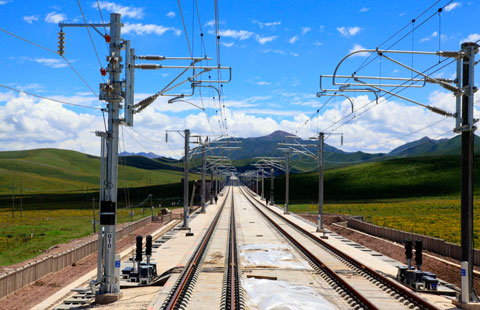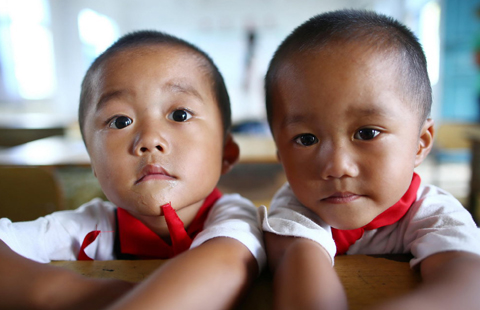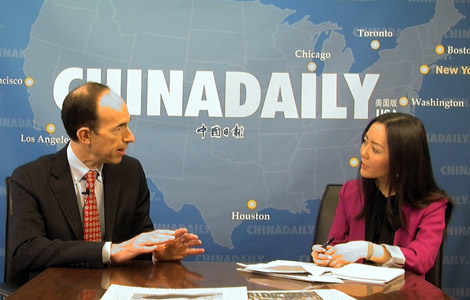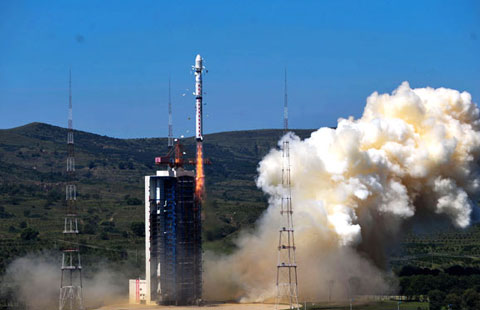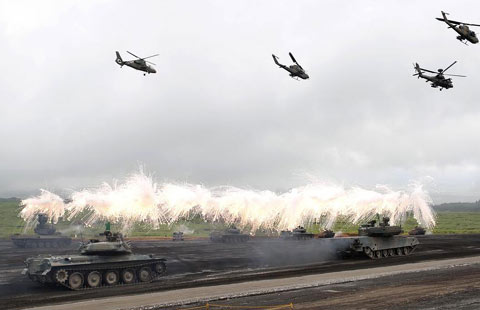Water use casts doubts on future of shale gas
Updated: 2014-09-03 11:22
By Chen Weihua in Washington(China Daily USA)
|
||||||||
Experts have warned of the potential risks to countries, including China, that are exploring their huge shale gas reserves but face severe constraints in water resources.
A report released on Tuesday by the Washington-based World Resources Institute (WRI) found that 38 percent of the world's shale resources face high to extremely high water stress or arid conditions. Water is critical in hydraulic fracturing, a technique used to extract shale gas.
"In China, we found large amounts of shale resources, however, most of these are located in areas of water stress," Paul Reig, associate at WRI and the report's lead author, told a conference call on Tuesday.
Over 60 percent of China's shale resources are found in areas of high to extremely high baseline water stress or arid conditions. This places China among eight of the top 20 countries with the largest shale gas resources that face arid conditions or high to extremely high baseline water stress where the shale resources are located.
Baseline water stress refers to the ratio of total water withdrawals to available renewable supply in an area.
According to the report, Global Shale Gas Development: Water Availability & Business Risk, the Sichuan play, now China's most commercially viable shale resources, combines areas of low and very high baseline water stress driven by pockets of high demand for water relative to the availability of supply. More than 95 percent of the Tarim play in Xinjiang is subject to extremely high baseline water stress or arid conditions.
These conditions will pose major challenges for companies to access water, in addition to other challenges, such as most shale resources in China being located in areas of high population density, the report says.
"With many countries already facing arid conditions and high water stress around the globe, this report can help to ensure that there's enough water available for industries, farms, and people, even if shale development advances," Reig said.
"Thankfully, there are smart and practical steps that countries and businesses can take to help reduce the water risks posed by future shale development."
The report made four recommendations to help governments, companies and civil societies protect water security while minimizing business risks.
They include conducting water risk assessments to understand local water availability and reduce business risk, increasing transparency and engaging with local regulators, communities and industry to minimize uncertainty and ensuring adequate water governance to guarantee water security and reduce regulatory and reputational risks and minimizing fresh water use and engaging in corporate water stewardship to reduce impacts on water availability.
The report says companies operating in arid areas and areas of high or extremely high baseline water stress in China will have to compete with other users for what is already a very scarce resource. High levels of competition among agricultural, domestic and industrial water users could represent higher costs, reputational risks and increased regulatory uncertainty for operators trying to access water for hydraulic fracturing and drilling operations.
Meanwhile, the Tarim and Junngar plays in Xinjiang are dominated by arid and low water use conditions, and very high surface and groundwater stress, leading oil and gas operators to potentially face significant financial risks associated with the additional costs of accessing and transporting water, according to the report.
Developers in areas with extremely high population density and medium to high seasonal variability, such as the Sichuan and most other Chinese plays, may face significant regulatory and reputational risks if water-intensive activities are conducted irresponsibly during drier periods, the report says.
"We want to make sure that we're not competing with fresh water resources," said Cal Cooper, director of special projects and emerging technologies at Apache Corp, an oil and gas exploration and production company based in Houston.
Cooper, who had worked in China years ago, said Chinese geo-scientists are very aware of the different types of water that are available in the western parts of China.
He believes the Chinese can weigh in alternative ways that traditionally have not been used in hydraulic fracturing until the last couple of years.
Reig of WRI emphasized that the solution lies in industrial collaboration to find the technology and share the benefits.
China has the world's largest technically recoverable shale gas resources and the third largest technically recoverable tight oil resources. In its 12th Five-Year Plan, China set a goal to produce 6.5 billion cubic meters of shale gas by 2015.
Sarah Forbes, a senior associate at WRI, said earlier that the hydraulic fracturing of that amount of shale gas would require 13.8 billion cubic meters of water, while the entire Chinese industrial sector uses about 35 billion cubic meters of water a year.
China produced 200 million cubic meters of shale gas in 2013, nearly eight times the 2012 output.
Xu Xinxiong, director of the National Energy Administration, told reporters last month that China's shale gas target for 2020 would be 30 billion cubic meters. This was only half of the 60 billion to 80 billion cubic meter target set in 2012.
Besides a lack of water resources and high density population, many of China's shale gas resources are located in geologically much more access-challenged areas compared with those in the US.
chenweihua@chinadailyusa.com
(China Daily USA 09/03/2014 page1)
Most Viewed
Editor's Picks

|

|

|

|

|

|
Today's Top News
Hotline set to help out Chinese overseas
Minorities outnumber whites in US public schools
Water use casts doubts on future of shale gas
US doctor in Liberia tests Ebola positive
China's August PMI decreases, but slightly
Monopoly probes treat firms equally
Gene to fight Parkinson's discovered at UCLA labs
China's Uncle Sam ready to test US market in NYC
US Weekly

|

|



